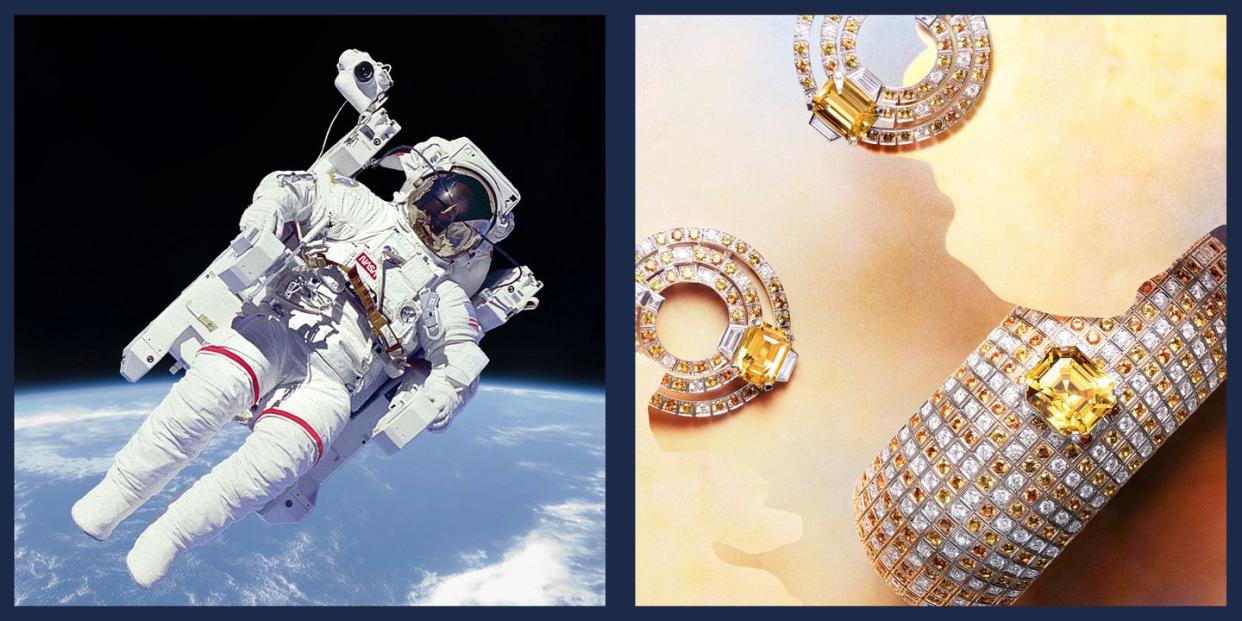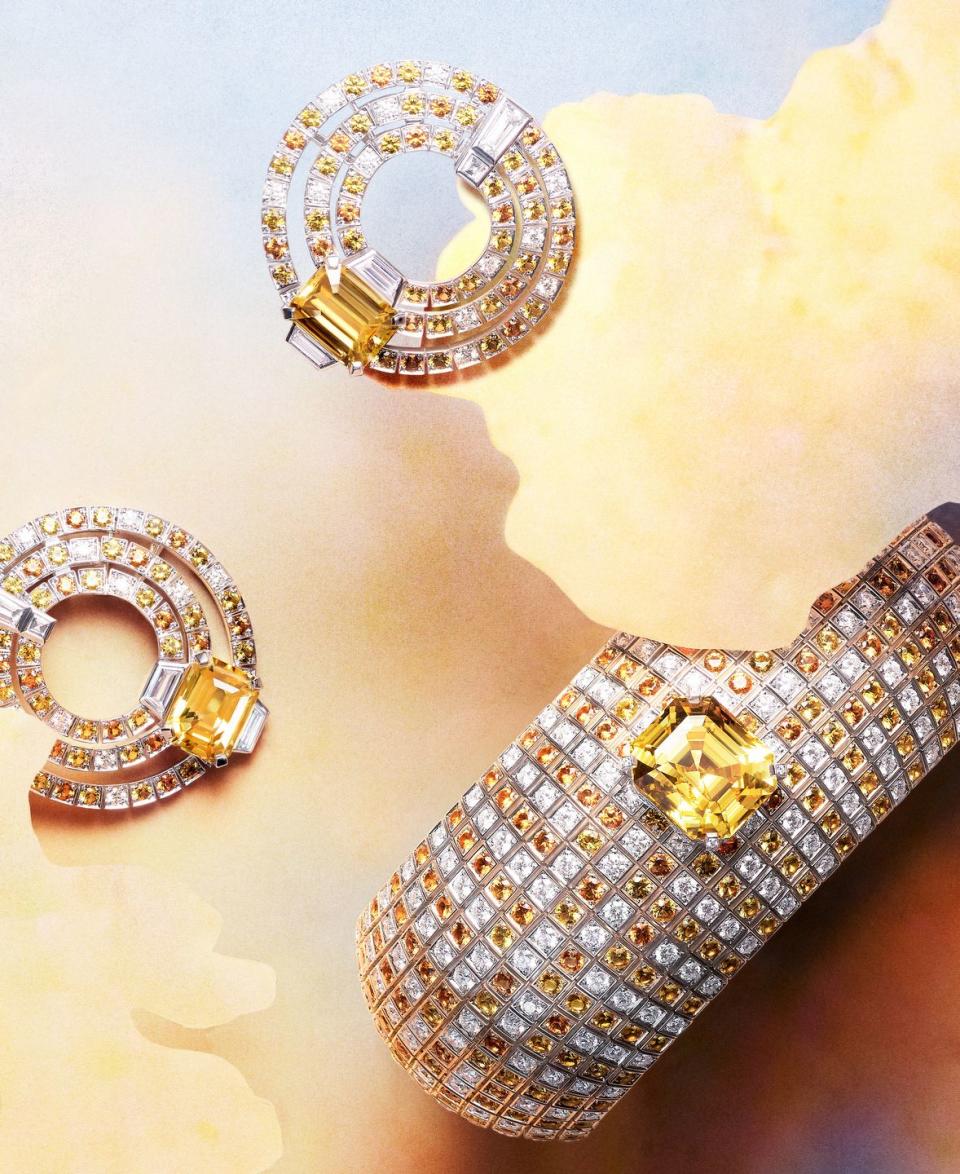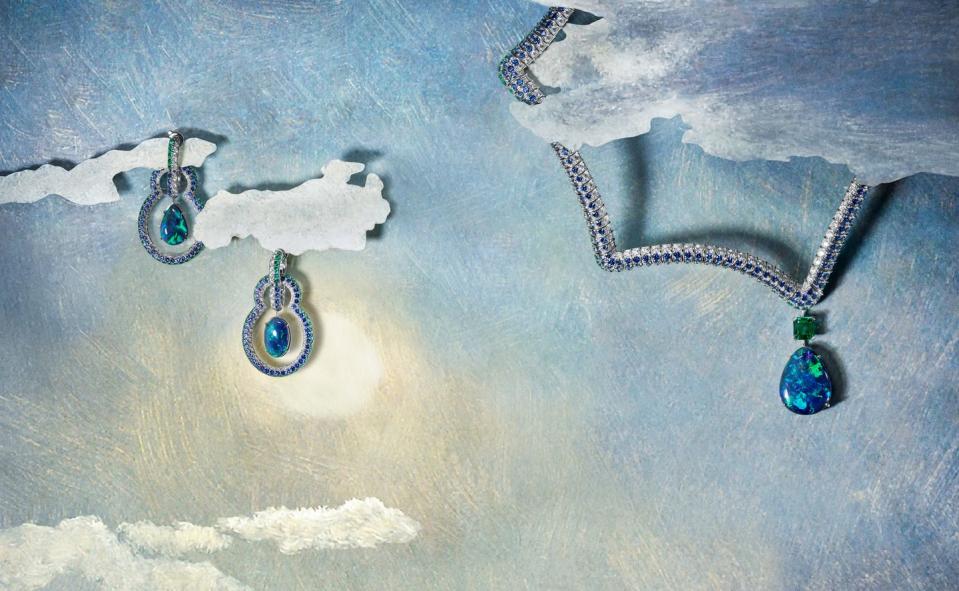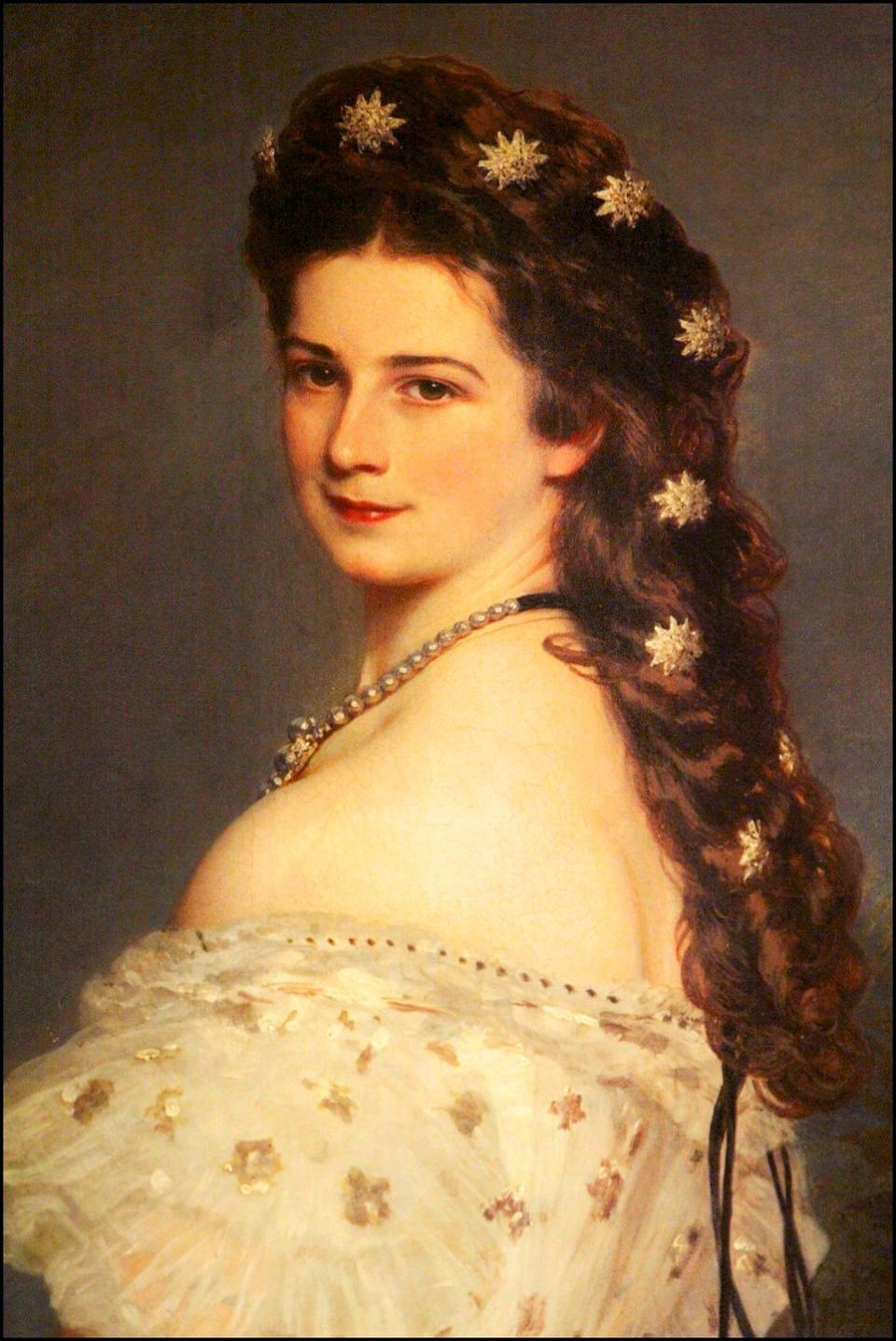Louis Vuitton's New High Jewelry Collection Is Literally Out of This World

In the summer of 1969, soon after the first astronauts landed on the moon, Aristotle Onassis commissioned a pair of hammered gold earrings for his wife Jackie to commemorate the occasion (it was also her birthday). In the 1950s a series of spiky gold brooches marked the news of Sputnik. In 1835, when Halley’s Comet appeared in the night sky, a fashion for diamond- and -emerald-studded celestial-themed brooches gripped the circles who could afford them. (When the comet came back in 1910, a more democratic paste stone variety swept the globe.)
Space exploration, and the heavens, and the planets’ rays, and the shapes of stars have a deep-rooted place in jewelry history. How far back does it go?
“Diamonds are the beginning of the universe. They are our closest connection to the Big Bang,” says Francesca Amfitheatrof. That is to say, it goes way back, to the beginning. And also back to the future: “We will be on Mars soon. Imagine if it’s a female astronaut who gets there first?”

Amfitheatrof, Louis Vuitton’s artistic director of jewelry and watches, is a fascinatingly narrative-driven designer. “What if the ability to time-travel begins around your neck, or on your finger?”
That is how she opens our conversation about her new 90-piece high jewelry collection, Stellar Times. It’s the kind of intriguing provocation that throws you off but somehow also makes you focus more clearly on the 8-carat ruby at the center of the diamond collar she designed to represent the Red Planet.
This particular story begins on terra firma, with Amfitheatrof having a “starting point of an idea,” which led to two years of research into space photography, the history of navigation, and the study of maps. One writer recently compared her approach to method acting. She does enter a zone when taking you through her collection (she and I have a history of journeying through her inspirations together, from her years at Tiffany & Co. ), and though you don’t need to know the full story to appreciate the power of her designs, her generosity in sharing her creative process is rare. It generates a kind of animated and exciting conversation not always present in the world of high jewelry.
Come, share the fantasy.

Stellar Times starts where her first high jewelry collection for Vuitton, Riders of the Knights, ended—with sapphires. “The opening chapter of Stellar Times is Lune Bleue, a nod to the previous collection.” Attentive readers may recall the central piece of Riders of the Knights, an armor-inspired collar with a sapphire at its center, which we featured in T&C a year ago. And they will see the connection between it and the almost domelike diamond and sapphire necklace that appears in Stellar Times.
“There is a curatorial thread from there,” Amfitheatrof says. “I allocated stones to each chapter.”

Black opals are central to the plot in Céleste, most spectacularly in a -constellation-like diamond and emerald pendant necklace. (Any potential client hung up on the myth that opals are bad luck should note that this has been debunked countless times: as a hoax originated by Cleopatra, so she could hoard the Roman Empire’s best stones; as a misreading of a scene in a 19th-century novel; or, most likely, as a conspiracy begun by 19th-century diamond dealers to squash the opal’s burgeoning popularity. “We use a lot of incredible opals,” Amfitheatrof says. “And our clients love them.”)
Yellow sapphires star in Soleils, the standout piece being a multi--tier necklace engineered to project volume and lightness at the same time, and the Astre Rouge chapter turns on the aforementioned 8-carat ruby.
The chapters’ organizing principles are a product of Amfitheatrof’s crystal clear vision for Vuitton and her desire to create a strong, distinct “jewelry vocabulary” for the house—but this should not lead you to assume that she is rigid in her approach. Her designs are armed with her belief in the wonders of the universe and the power of the artisans at the Vuitton atelier on Place Vend?me where, she says, “everything is possible.”
“The Place Vend?me atelier is just another level. I respect the thousands of hours that go into the making of the pieces, and what I call the ‘making’ language we all share. I speak that. And our clients feel that—the way each piece is hand-made, the engineering behind it. Each fits so well you feel as if you could climb a mountain wearing it.”
Amfitheatrof admits there were Zoom calls when she would ask to shift a design by a “decimal of a millimeter. I’m a stickler for proportion.”
It’s all part of her mission to inject even her high jewelry pieces with a certain amount of informality. “Vuitton is about adventure and energy, and the women buying our high jewelry embody that. They want to wear this.”
How each piece will look while being worn—on a mountain, across a dinner table, on a SpaceX trip to Mars—is crucial to Amfitheatrof. She describes the assembling of the multiple diamonds on one necklace, the hours of consideration it took to see how the light from them would play from each side of the wearer’s profile. The expertise to experiment with the cuts of the stones -creates an effect of “a shower of diamonds.”
This collection is also a tour de force on the part of Vuitton’s stone buyers; Amfitheatrof says that working with them is “a dream come true. They are in the tradition of the old stone hunters, like the adventurers who went to Egypt to find King Tut.”
The gems they procure over the course of a year allow Amfitheatrof’s “top line idea” of space exploration to later become a reality. Access to rare rubies, and sapphires and black opals and emeralds, and a specific trove of Vietnamese spinels, allowed her to identify the colors in a photograph of space and then “paint in stones.”
If you’re wondering whether the towering 2019 achievement of the Vuitton stone department—the acquisition of the second--largest diamond in the world—made its way into this collection, the answer is no. But be patient. The beauty of all high jewelry at this moment is that it lives in an alternate reality of time—in the sense that, in a world where so much is fleeting, each piece takes a large amount of it to create.
“High jewelry is a slow and meticulous process,” Amfitheatrof says. “There is thought and process behind everything we do, and I think people are considering that even more deeply than they did a year ago. The legacy here is timelessness.”

This story appears in the December 2020/January 2021 issue of Town & Country. SUBSCRIBE NOW
You Might Also Like